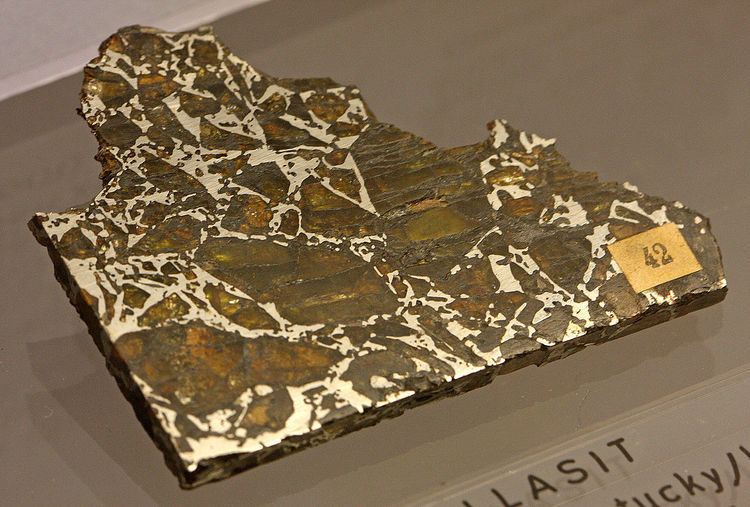Type Stony-iron Total known specimens 4 | Class Pallasite | |
 | ||
Composition Meteoric iron, silicates | ||
The Eagle Station grouplet (abbreviated PES - Pallasite Eagle Station) is a set of pallasite meteorite specimen that don't fit into any of the defined pallasite groups. In meteorite classification five meteorites have to be found, so they can be defined as their own group. Currently only five Eagle Station type meteorites have been found.
Contents
Naming and history
The Eagle Station grouplet is named after the Eagle Station meteorite, the type specimen of the grouplet. It is in turned named after Eagle Station, Carroll County Kentucky where it was found.
Description
The Eagle Station grouplet has a composition similar to Main group pallasites. Diagnostic differences are that the olivine is richer in iron and calcium. The grouplet also has a distinct oxygen isotope signature.
The meteoric iron is similar to the IIF iron meteorites. This might indicate that Eagle station grouplet and IIF formed close to each other in the solar nebula.
Parent body
The trace elements in the phosphates of the Eagle Station grouplet are distinct from other pallasites. Most pallasites are believed to be derived from the core-mantle boundary. Trace elements indicate that the Eagle Station grouplet came from shallower depths of their parent body.
Notable specimen
Only four specimen have been found so far:
